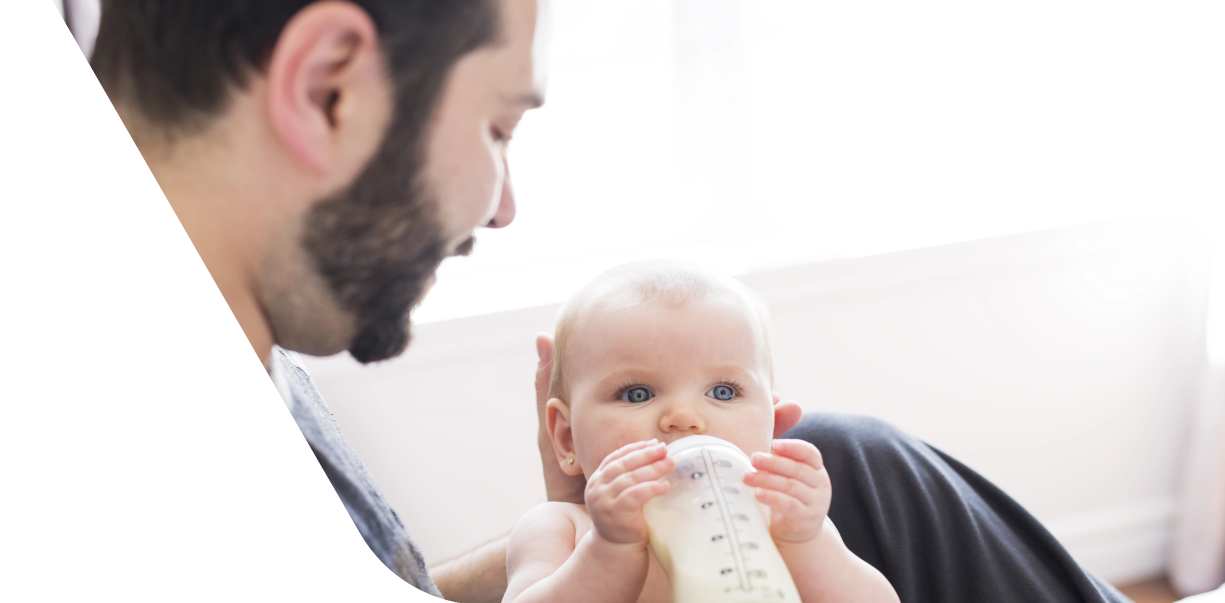Guidelines on How to Store Baby Formula
While preparing formula for your baby is a relatively simple task itself, it’s also important to keep in mind a range of safety guidelines regarding baby formula storage to help avoid any potential issues. There are three kinds of baby formula: powder, ready-to-feed, and concentrated liquid, and below we have storage guidelines for each in order to help you safely provide your baby with the nutrition she needs, no matter which variety you choose to use. Read our formula storage highlights, or get the complete guidelines below.
Baby Formula Storage Highlights:
- Carefully follow infant formula label instructions for preparation and use
- Discard any refrigerated powdered formula after 24 hours
- Discard any refrigerated ready-to-use or concentrated liquid formula after 48 hours
- After feeding begins, use formula within one hour or discard
- Do not use prepared formula if it is unrefrigerated for more than a total of 2 hours
Powdered Baby Formula Storage Guidelines
Powdered baby formula is not a sterile product.1 It should not be fed to premature infants or those who might have immune system issues.2 If you do choose powdered formula for your baby, to help keep them safe, prepare it according to the exact guidelines given on the product label, unless otherwise instructed by your doctor.
Check the expiration date on your formula container before use. The container’s contents need to be used within one month after opening.2 Meanwhile, store the powder at room temperature in a dry area, with the lid tightly closed.
Quick Tip: Write the date on which you opened it somewhere on the powdered formula’s container itself for future reference.
Any prepared powder formula should be used immediately or covered and stored in the refrigerator between 2-4°C (35-40°F) for no more than 24 hours. Do not use prepared formula if it is unrefrigerated for more than 2 hours. After feeding begins, use the formula within one hour or discard.
Ready-to-feed & Concentrated Liquid Baby Formula Storage Guidelines
Just like powdered formula, ready-to-feed and concentrated liquid formula varieties should be stored in a cool, dry place before being opened.3 Similarly, you should discard any unused formula after two hours of being left unrefrigerated or after one hour of beginning feeding. The main difference between these two types of formula and the powdered variety is that, once packages of ready-to-feed and concentrated formula have been opened, they can be stored safely in the refrigerator for up to 48 hours.3
Tips for On-the-Go Baby Formula Storage
Sometimes you’ll run into scenarios where you might need to make more than one serving of formula ahead of time and take them with you on the road. If this is the case and you’re using powdered formula, wait until the last minute to remove the prepared formula from the refrigerator and place them in a cool bag with ice packs. Use the formula or put it back in a refrigerator within two hours.1
Of course, there also may be times when you’re going to be away from home for more than two hours. While you can measure out the correct amount of powder formula ahead of time, there are other options available. When mixing powdered formula while on the road, you can use premeasured packets, like Enfamil A+ single-serve powder sticks that are great to just grab and go. To help you avoid mixing and measuring entirely, or during times you won’t have access to clean water, there’s Enfamil A+ Ready to Feed, which comes in 2 sizes to suit all sizes of infants.4
When it comes to baby formula storage, there are plenty of critical details to remember. However, just like learning to prepare formula, with some concentration and practice, these formula storage guidelines will likely soon become second-nature. We also answer common questions in our comprehensive guide on how to store breastmilk.
If you’re starting a pregnancy journey, it’s a great time to sign up for My Family BeginningsTM from Enfamil A+®. You’ll get coupons, tips and more delivered right to your inbox.
SIGN UP




